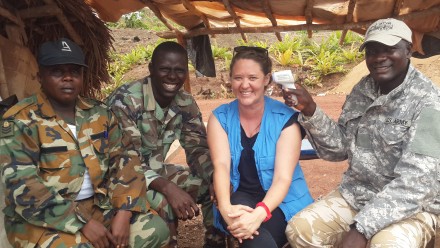Pain and cancer: what we know from world’s largest study to date
Share
A first-of-its-kind study looking at the levels of pain experienced by cancer survivors provides evidence on when pain is most likely to be experienced, and offers reassurance for many cancer survivors, their loved ones and health professionals, according to experts at The Australian National University (ANU).
With cancer survival rates increasing, lead author Associate Professor Grace Joshy AM said it is more important than ever to focus on the health and quality of life of survivors.
“Pain is one of the most feared symptoms of cancer, but little is known about the extent to which cancer survivors experience pain,” Associate Professor Joshy said.
“Using data from more than 16,000 cancer survivors with 13 different types of cancer - both common and less common - and over 100,000 people without cancer, we were able to compare the experiences of cancer survivors with that of the general population.
“Pain was common in both groups. Overall, 35 per cent of cancer survivors and 31 per cent of participants without cancer reported moderate to severe pain in the last four weeks.
The study also showed that 16 per cent of cancer survivors had pain sufficient to impact their day-to-day activities, compared to 13 per cent in people without cancer.
“This study shows that many people with cancer are affected by pain, and should lead to options for better care,” John Stubbs, an author on the paper with lived experience of cancer, said.
Pain was greater for those with a more recent cancer diagnosis, more advanced stage cancer, or those who had undergone treatment within the last month.
According to study co-author Professor Emily Banks AM, people diagnosed with certain cancers, such as multiple myeloma and lung cancer, were more likely than others to be in pain.
“But there is also good news. Reassuringly, on average, cancer survivors who had not received treatment in the last month and survivors of common cancers such as breast, colorectal and prostate cancer had pain levels not dissimilar to their peers without cancer," Professor Banks said.
"This means that a lot of people in the community who have had cancer in the past are not experiencing pain that is affecting their daily lives.”
Professor Tanya Buchanan, CEO of Cancer Council Australia, said the study is a “world-first” in providing large scale evidence to guide survivors, the community, policymakers and health professionals.
“Pain is something that we all fear, especially following a diagnosis of cancer,” she said.
“These results highlight stages in the cancer journey and cancer types where pain is most common, as well as providing cause for optimism for most people living with cancer.”
The study has been published in BMC Cancer.










